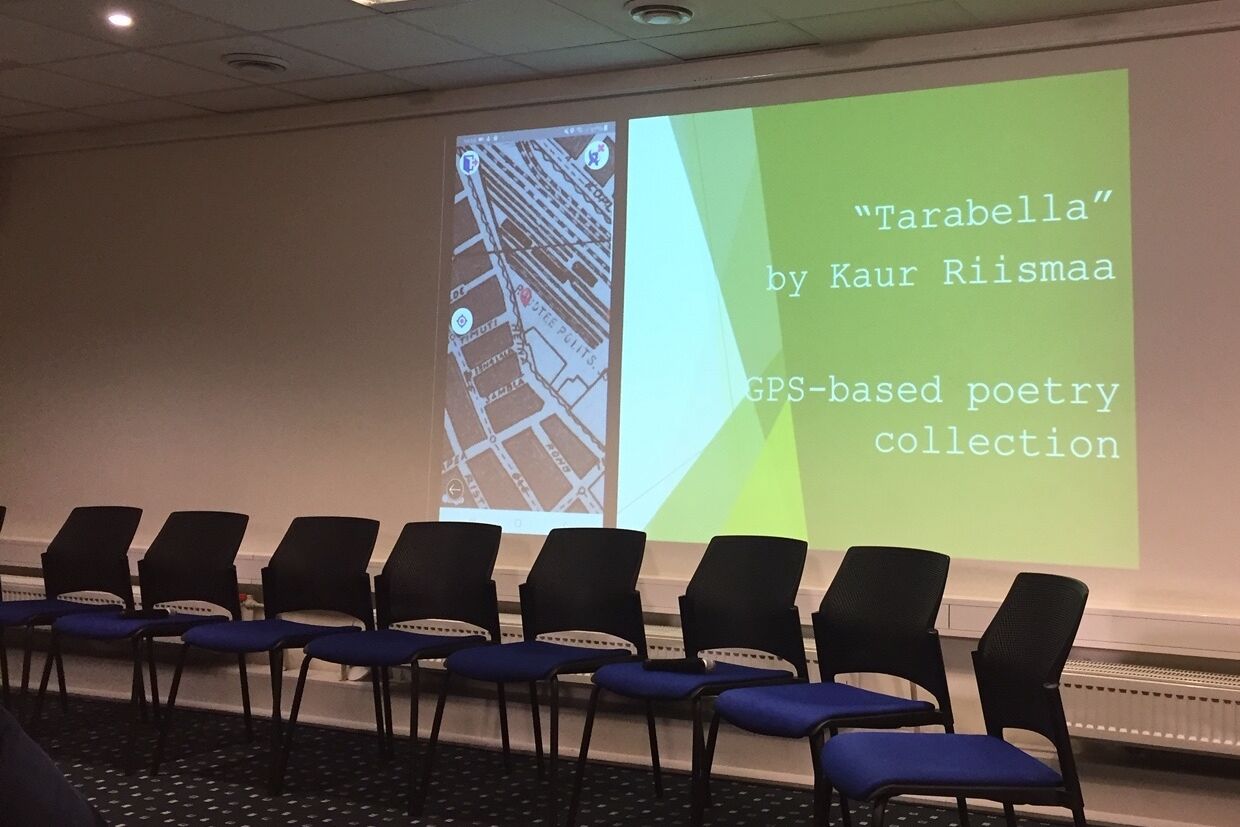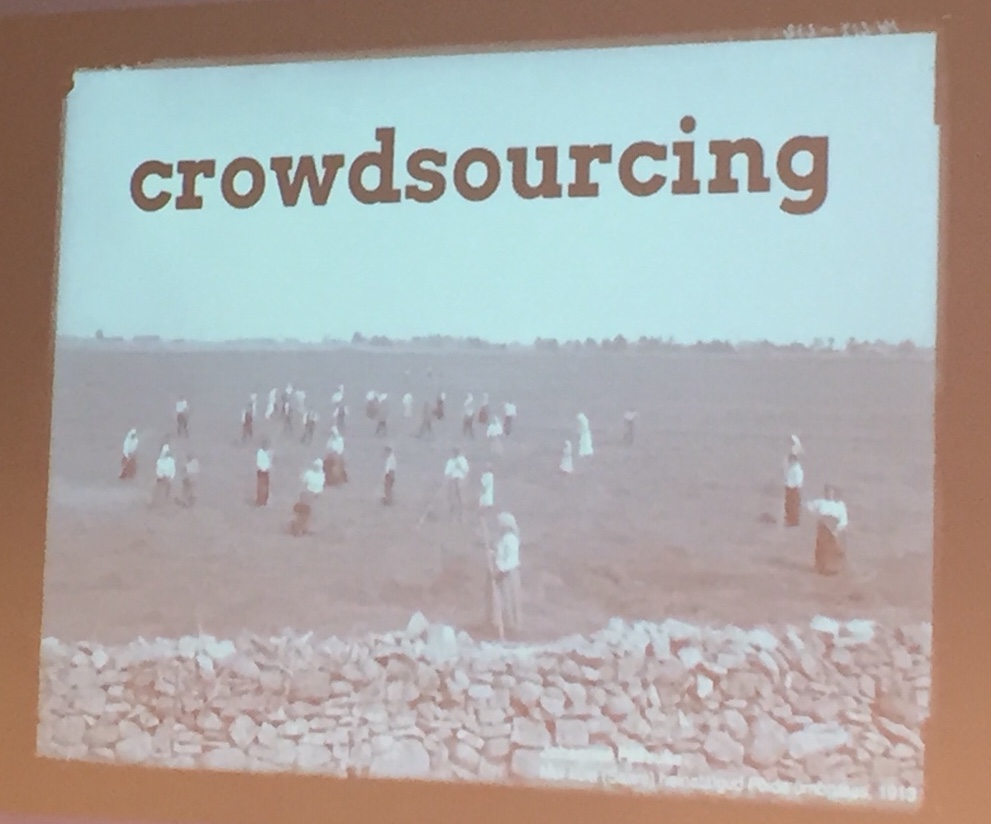The fact that digitality has a high potential for current societies and cultures becomes clear at least with the current interest in the new qualities of E-Learning, video-conferences, or digital exhibitions. The importance of digital measures for the preservation and dissemination of the cultural heritage was the topic of a workshop entitled Digitizing Cultural Heritage and Its Innovative Usage organized in Tallinn as part of the German Spring. The event brought scientific institutions of the State of Lower Saxony and of Estonia together for the sake of exchange of ideas and development of cooperation formats.
Janne Andresoo, Director General of National Library of Estonia, emphasised in her welcome address that we are now in a turning point between a still analog und already digital world. The main question is how to shape this process of transformation. Accordingly, Marek Tamm (Tallinn University) asked in his introduction how to use and analyze the given amount of data to make the digitalized cultural heritage useful and accessible. Following this line of thought, Indrek Ibrus (Tallinn University) expanded this question by bringing the example of the Estonian Film database (EFDB) which provides information on the entire Estonian film heritage. He pointed out that the problem lies not only in setting digitalization as the topical aim, but, moreover, in elaborating on how to deal with content that has been already digitized: How to distribute it and make it consumable, reusable, applicable for different purposes? A possible approach could involve the so-called Folksonomie, a kind of social tagging. With recourse to Juri Lotman’s approach to cultural semiotics and to the discourse analysis by Michel Foucault, Ibrus thus created a theoretical groundwork for how to open the system which is based on the need to insert variety. Of particularly relevance in this context are metadata which are creating a discourse on information. Therefore, Ibrus argues that they must also become an object of policy in order to develop and maintain a sustainable digital culture.
In this regard, it was interesting to experience the different approaches, ways of understanding and possibilities shown in the subsequent presentations of Databases, online-platforms by German and Estonian scientific and cultural institutions.
Frank Dührkohp (VZG) presented, for instance, different databases of digitised collections of the State of Lower Saxony (https://kulturerbe.niedersachsen.de/start/;https://www.kuenstlerdatenbank.niedersachsen.de). Björn Schreier (GWLB) presented an online exhibition of historical maps with which a virtual journey to Tallinn can be started. The digitised maps were also linked to historical travel descriptions (https://kulturerbe.niedersachsen.de/ausstellung/travelling-in-northern-europe/). Finally, Margrete Plank (TIB) focused on the portal for audio-visual heritage (https://av.tib.eu) as a special form of preservation of ethnographic and educational videos and of making them accessible to the public. By and large, the presentations reflected the efforts made particularly by libraries to digitise their collections, to make them user-friendly and to build a better research infrastructure, such as, for instance, www.dariah.de.
In contrast, the insights into the projects of Estonian archives and libraries, in terms of the question posed at the beginning by Marek Tamm and Indrek Ibrus, mainly showed how data can be curated and how society can participate in their formats beyond institutional boundaries. Using the digital photo gallery Ajapaik (https://ajapaik.ee/?page=1) of the Estonian Photographic Heritage Society as an example, Vahur Puik presented the possibility of crowdsourcing and geotagging for the verification and localization of historical photographs. Sven Lepa from the Estonian National Archive demonstrated with two digital research projects (https://artsandculture.google.com/exhibit/%C2%A0-tartu-1914-1918/IgLyovtaVf-mLw-1918/IgLyovtaVf-mLw) that this form of involving broader social groups in order to collect information on archive holdings is not only helpful for associations.
Andra Orn's commented on NOAR. Access to Art! (https://noar.eu/en/home/), a project with which works by artists from Estonia and from the Nordic countries are collected and marketed outside of institutions. The precarious financial situation and a lack of institutional links that would guarantee uniform standards and permanent storage pose challenges for this project. At the same time, an augmented-reality project on works by the Estonian street art artist Edward von Lõngus proved innovative,; its potential was also demonstrated by Kaur Riismaa with the example of the Smart Museum for Children and interactive city walks in Tallinn.
With these last two examples, it became clear once again that the digitisation of collections requires both an institutional framework and technical formats for analysis (machine-learning, geotagging, augmented reality), participation and mediation in order not only to preserve but also to shape cultural heritage. To achieve this, however, institutions such as libraries, museums and archives must also break new ground. Finally, Philippe Genêt from the German Digital Library showed an exciting and productive initiative of the hackathon Coding da Vinci (
Text: Antje Kempe


